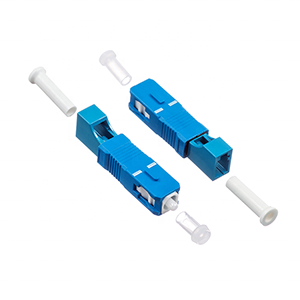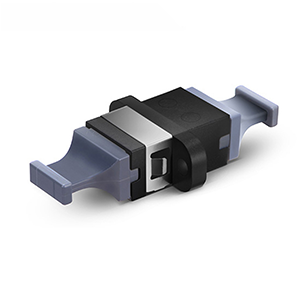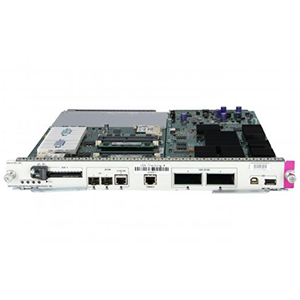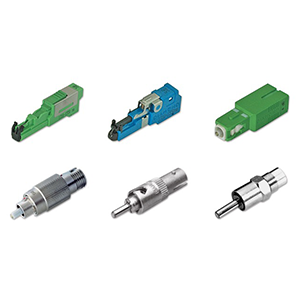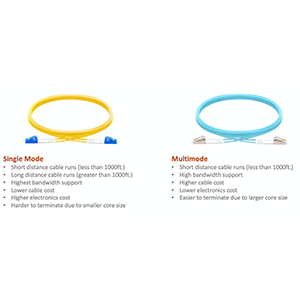Thank you for choosing to read this article. Today I will introduce to you the SFP+ 10G-ER optical module and its important role in network communications. The SFP+ 10G-ER optical module is a high-speed optical module that is widely used in long-distance optical fiber transmission to provide users with stable and reliable data communication.
Overview of SFP+ 10G-ER optical module
The SFP+ 10G-ER optical module is a small pluggable module for fiber optic communications that supports 10 Gigabit Ethernet (10GbE) rates and long-distance transmission. It is based on the SFP+ (Small Form-Factor Pluggable Plus) standard and is one of the SFP+ series modules.
SFP+ 10G-ER optical module plays an important role in network communications. It provides high-bandwidth and high-rate data transmission and is suitable for scenarios requiring long-distance transmission. The optical module uses optical fiber media to transmit data and transmit information from one device to another through light to achieve reliable data communication.
SFP+ 10G-ER optical modules have a wide range of application scenarios in optical fiber transmission across long distances, including cross-city data center interconnection, campus network connections, wide area network connections, and optical fiber backbone networks of telecom operators. It provides high-speed, long-distance data transmission capabilities for these applications, ensuring data reliability and stability.
The working principle of SFP+ 10G-ER optical module
The working principle of the SFP+ 10G-ER optical module involves processes such as photoelectric conversion and signal modulation. Here’s an overview of how it basically works:
-
Photoelectric conversion: SFP+ 10G-ER optical module first converts electrical signals into optical signals. It uses a pair of photoelectric converters, a laser and an optical receiver. Lasers convert electrical signals into optical signals, which are transmitted through optical fibers. Optical receivers receive optical signals and convert them back into electrical signals.
-
Signal modulation: At the transmitting end, the electrical signal is converted into an optical signal through a modulation process. This is usually accomplished using direct modulation or external modulation. Direct modulation refers to modulating the electrical signal directly into the laser, while external modulation modulates the electrical signal into an external modulator (such as a Mach-Zehnder modulator) and then inputs it into the laser.
-
Optical signal transmission: Optical signals are transmitted through optical fibers. SFP+ 10G-ER optical module supports long-distance transmission and usually uses single-mode optical fiber for transmission. Single-mode fiber has a smaller core diameter, which can reduce the propagation loss and dispersion of optical signals, thereby supporting long-distance transmission.
-
Optical signal reception: At the receiving end, the optical signal is received by the optical receiver. Optical receivers convert optical signals into electrical signals, amplify and process them. The electrical signal is then sent to a receiving device for further processing and decoding.
The SFP+ 10G-ER optical module achieves high-speed, long-distance data transmission mainly based on the following technologies and features:
-
High rate: SFP+ 10G-ER optical module supports 10GbE rate and provides high-bandwidth data transmission capabilities. This enables it to transfer large amounts of data in a shorter period of time.
-
High-power laser: In order to achieve long-distance transmission, the SFP+ 10G-ER optical module uses a high-power laser to generate strong light signals. This can provide enough optical power to overcome losses and attenuation in fiber transmission.
-
Optical fiber transmission technology: SFP+ 10G-ER optical module usually uses single-mode optical fiber for transmission. Single-mode fiber has a smaller core diameter that reduces transmission loss and dispersion, allowing for long-distance transmission.
-
Optical receiver sensitivity: In order to receive optical signals transmitted over long distances, the optical receiver of the SFP+ 10G-ER optical module has high sensitivity. This can improve signal reception and reduce the bit error rate in signal transmission.
Technical specifications of SFP+ 10G-ER optical module
The technical specifications of the SFP+ 10G-ER optical module include transmission distance, wavelength and transmission rate. The following is the general scope and impact of these technical specifications:
-
Transmission distance: SFP+ 10G-ER optical modules usually support longer transmission distances, generally up to 40 kilometers or more. This makes it suitable for network connection needs that need to span a larger range, such as inter-city connections or long-distance data center interconnections.
-
Wavelength: The wavelength of SFP+ 10G-ER optical module is usually around 1550 nanometers. This wavelength range is the transmission window of single-mode fiber, which effectively reduces the transmission loss and dispersion of optical signals in the fiber.
-
Transmission rate: The transmission rate of the SFP+ 10G-ER optical module is 10 Gigabit per second (10Gb/s), which is the 10GbE rate. This provides high-bandwidth, high-rate data transmission capabilities.
These technical specifications have the following impact and scope of application on optical fiber transmission:
-
Transmission distance: The long transmission distance of the SFP+ 10G-ER optical module makes it suitable for application scenarios that need to span large distances. For example, when it is necessary to connect data centers between cities or make WAN connections, SFP+ 10G-ER optical modules can provide reliable data transmission.
-
Wavelength: The wavelength of the SFP+ 10G-ER optical module is within the transmission window of single-mode fiber, which can reduce the loss and dispersion of optical signals during transmission. This helps maintain signal strength and stability, improving transmission reliability.
-
Transmission rate: The 10GbE rate of the SFP+ 10G-ER optical module provides high-bandwidth data transmission capabilities and is suitable for scenarios that require large amounts of data transmission. For example, applications such as high-definition video streaming, large-scale data transmission, cloud computing and data center interconnection can benefit from its high speed.
It should be noted that SFP+ 10G-ER optical modules from different manufacturers may have slightly different technical specifications and performance ranges. When selecting and deploying, ensure that the technical specifications of the optical module match actual needs and are compatible with other network equipment.
Advantages and application scenarios of SFP+ 10G-ER optical modules
The SFP+ 10G-ER optical module has the following advantages compared to other optical modules, making it an ideal choice in specific application scenarios:
-
Long-distance transmission capability: SFP+ 10G-ER optical module supports longer transmission distances, usually up to 40 kilometers or more. This makes it ideal for network connectivity needs that span larger areas, such as inter-city connections or long-distance data center interconnections.
-
High reliability: SFP+ 10G-ER optical module has high reliability during transmission. It uses single-mode optical fiber for transmission, which reduces the transmission loss and dispersion of optical signals. In addition, it usually uses high-power lasers and sensitive optical receivers to ensure the strength and quality of the signal and reduce the bit error rate in transmission.
-
High-speed transmission: SFP+ 10G-ER optical module supports 10GbE rate and provides high-bandwidth data transmission capabilities. This makes it suitable for scenarios that require large amounts of data transmission, such as high-definition video streaming, large-scale data transmission, cloud computing, and data center interconnection.
-
Flexibility and pluggability: The SFP+ 10G-ER optical module adopts a small package (SFP+) and has a plug-in design that can be easily installed and replaced. This enables network equipment to be flexibly configured and expanded while providing interoperability and upgradeability.
Based on the above advantages, SFP+ 10G-ER optical module is suitable for the following practical application scenarios:
-
Long-distance network connection: When network connections across large distances are required, such as connecting data centers, remote office locations or branches in different cities, SFP+ 10G-ER optical modules can provide high-performance and reliable data transmission.
-
Long-distance data center interconnection: In terms of data center interconnection, SFP+ 10G-ER optical modules can be used to connect data centers located in different geographical locations and support high-bandwidth, low-latency data transmission.
-
Video transmission and broadcasting: For applications that need to transmit high-definition video streams or broadcast content, the SFP+ 10G-ER optical module can provide stable and high-speed data transmission to ensure the quality and consistency of video and audio.
-
Remote monitoring and security systems: In remote monitoring and security systems, SFP+ 10G-ER optical modules can achieve long-distance video transmission and data transmission to meet the needs of long-distance monitoring and security monitoring.
Appropriate optical modules need to be selected based on specific network requirements and application scenarios. If long-distance transmission, high reliability and high-speed transmission, as well as flexibility and pluggability are required, SFP+ 10G-ER optical modules will be an ideal choice.
SFP+ 10G-ER optical module deployment and configuration recommendations
When deploying and configuring SFP+ 10G-ER optical modules, the following are some recommendations and best practices:
Fiber optic connections and cable routing:
- Use single-mode optical fiber that meets specifications for connection to ensure that the quality and performance of the optical fiber meet the requirements.
- Pay attention to the cleaning and protection of fiber optic connections, use appropriate fiber optic connectors and adapters, and avoid bending and stretching fiber optics.
- During the wiring process, ensure that the direction and bending radius of the optical cable comply with specifications to avoid damage and optical signal attenuation.
Equipment configuration:
- Make sure that the network equipment used (such as switches, routers, etc.) supports SFP+ 10G-ER optical modules and has corresponding optical fiber interfaces.
- Install the SFP+ 10G-ER optical module correctly on the device, ensuring the insertion position is correct, the connection is firm, and the screws are tightened to maintain stability.
- Configure the optical fiber interface of the device to ensure that its rate and protocol match the SFP+ 10G-ER optical module.
Optical power calibration:
- After deploying the SFP+ 10G-ER optical module, ensure the strength and quality of the optical signal through optical power calibration. This can use an optical power meter to measure the optical power at the transmitting and receiving ends and make necessary adjustments.
- Determine the appropriate optical power range based on the specifications of the optical module and the recommendations provided by the manufacturer, and ensure that the optical power at the transmitting and receiving ends is within the specified range.
Link monitoring and troubleshooting:
- Use the link monitoring function provided by the device to monitor the status of the optical module and link in real time. This can help detect and resolve potential faults and issues.
- Configure the device to enable link monitoring functions and set appropriate thresholds and alarm mechanisms to detect link failures or abnormalities in a timely manner.
- During the troubleshooting process, test tools such as optical power meters and optical time domain reflectometers (OTDR) can be used to check the quality of the optical fiber connection and confirm whether the optical module and optical fiber link are working properly.
These recommendations and best practices can help ensure proper deployment and configuration of SFP+ 10G-ER optical modules. Before proceeding with deployment and configuration, it is recommended to refer to the device and optical module manufacturer documentation and follow the specific guidance and recommendations they provide.
Future development trend of SFP+ 10G-ER optical modules
SFP+ 10G-ER optical modules may be improved and evolved in the following directions in future development:
-
Higher transmission rates: With the growth of network demands and technological advancement, SFP+ 10G-ER optical modules may develop higher transmission rates. For example, 25GbE, 40GbE and even 100GbE SFP+ optical modules are expected to appear to meet the growing bandwidth needs.
-
Lower power consumption design: The increasing awareness of energy saving and environmental protection will promote the development of SFP+ 10G-ER optical modules towards lower power consumption design. Higher energy efficiency and lower power consumption can be achieved through the use of more efficient optics, circuit designs, and low-power electronics.
-
Multi-mode optical fiber support: Currently, the SFP+ 10G-ER optical module mainly supports single-mode optical fiber transmission, but it may be expanded to support multi-mode optical fiber in the future. This will make the SFP+ 10G-ER optical module more flexible and versatile in different types of optical fiber networks.
-
Integration and function enhancement: With the advancement of technology, SFP+ 10G-ER optical modules may integrate more functions and features, such as digital diagnostic monitoring functions, automatic optical power control, fault detection and error correction capabilities, etc., to Provide smarter and more reliable optical transmission solutions.
In terms of combination with emerging technologies, SFP+ 10G-ER optical modules may be combined with the following technologies and standards:
-
Data center interconnection: As the scale of data centers expands and data traffic increases, SFP+ 10G-ER optical modules can be used to achieve high-speed, long-distance data center interconnection. It can be combined with data center interconnection technologies (such as optical interconnection, Ethernet hosting, etc.) to provide high-bandwidth, low-latency data transmission.
-
Evolution of optical fiber communication standards: Optical fiber communication standards continue to evolve, such as the formulation and promotion of 100G, 400G and higher-speed standards. SFP+ 10G-ER optical modules may be combined with these new optical fiber communication standards to meet the needs of future networks.
Summarize:
The future development trend of SFP+ 10G-ER optical modules is very exciting. With the emergence of designs with higher transmission rates and lower power consumption, it will be combined with emerging technologies such as data center interconnection and the evolution of optical fiber communication standards to provide Provide users with more powerful network communication capabilities.
If you are interested in SFP+ 10G-ER optical modules, please consider contacting us. We will provide you with professional advice and support to help you choose the SFP+ 10G-ER optical module solution that suits your needs to achieve high-speed and reliable Optical fiber transmission.
- What is SFP+ ER?
- What is the range of 10G ER SFP?
- What is the difference between 10G SFP and 10G SFP+?
- What is the difference between SFP 10G LR and SFP 10G LRM?
- What is an ER transceiver?
- What does 10GBASE er stand for?
- What are 10G SFP+ ports used for?
- Is SFP+ better than RJ45?


